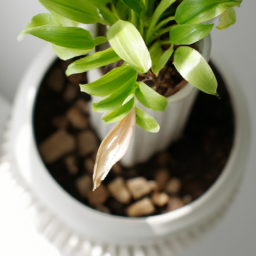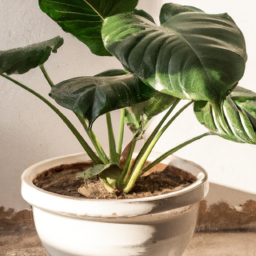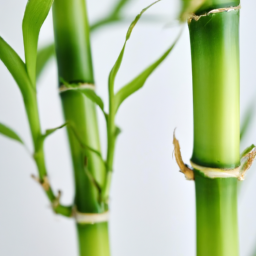
So you’re thinking about adding some greenery to your indoor space, and you’ve heard that bamboo plants are a great option. Well, you’ve come to the right place! In this blog post, we’ll be discussing the different types of bamboo plants that are perfect for indoor environments. Whether you’re looking for a low-maintenance plant to brighten up your office or a statement piece for your living room, there’s a type of bamboo plant out there for you. Let’s dive in and explore the wonderful world of types of bamboo plants indoor.
The Benefits of Growing Different Types of Bamboo Plants Indoors
Why Choose Bamboo Plants for Indoor Growing?
Bamboo plants are not only beautiful additions to any indoor space, but they also offer a range of benefits that make them a popular choice for indoor gardening. One of the main reasons people choose bamboo plants for indoor growing is their ability to purify the air. Bamboo plants are known for their air-purifying properties, which can help to create a healthier indoor environment by removing toxins and pollutants from the air.
In addition to their air-purifying abilities, bamboo plants are also relatively easy to care for, making them a low-maintenance option for indoor gardening. They require minimal watering and can thrive in a variety of light conditions, making them a versatile choice for indoor spaces with different lighting situations. Bamboo plants also grow quickly, so you can enjoy watching them grow and flourish in your indoor space.
Another benefit of growing bamboo plants indoors is their aesthetic appeal. Bamboo plants come in a variety of shapes, sizes, and colors, making them a versatile choice for adding a touch of greenery to any indoor space. Whether you prefer a tall, elegant bamboo plant or a small, compact variety, there is a bamboo plant to suit every indoor space and style.
Types of Bamboo Plants for Indoor Growing
When it comes to choosing bamboo plants for indoor growing, there are several different types to consider. One popular option is the lucky bamboo plant, which is actually not a true bamboo plant but a member of the Dracaena family. Lucky bamboo plants are known for their resilience and can thrive in low light conditions, making them a great choice for indoor spaces with limited natural light.
Another popular choice for indoor bamboo plants is the dwarf bamboo plant. Dwarf bamboo plants are smaller in size than traditional bamboo plants, making them a great option for indoor spaces with limited space. They come in a variety of colors and can add a pop of color to any indoor space.
For those looking for a more traditional bamboo plant, the golden bamboo plant is a popular choice for indoor growing. Golden bamboo plants are known for their vibrant yellow color and can add a touch of brightness to any indoor space. They are relatively easy to care for and can thrive in a variety of indoor conditions.
In addition to these popular options, there are many other types of bamboo plants that can be grown indoors, each with its own unique characteristics and benefits. Whether you prefer a tall, elegant bamboo plant or a small, colorful variety, there is a bamboo plant to suit every indoor space and gardening style.
Tips for Growing Bamboo Plants Indoors
When growing bamboo plants indoors, there are a few tips to keep in mind to ensure they thrive in your indoor space. First, make sure to choose a well-draining potting mix for your bamboo plant to prevent waterlogged soil, which can lead to root rot. Bamboo plants prefer slightly acidic soil, so consider adding a small amount of peat moss or pine bark to the potting mix.
In terms of watering, bamboo plants prefer to be kept consistently moist but not waterlogged. Water your bamboo plant when the top inch of soil feels dry to the touch, and be sure to allow any excess water to drain away to prevent root rot. Bamboo plants also benefit from regular misting to increase humidity levels, especially in dry indoor environments.
Finally, consider the lighting conditions in your indoor space when choosing a location for your bamboo plant. While bamboo plants can thrive in low light conditions, they do best in bright, indirect light. Avoid placing your bamboo plant in direct sunlight, as this can scorch the leaves and cause damage to the plant.
By following these tips and choosing the right type of bamboo plant for your indoor space, you can enjoy the many benefits of growing bamboo plants indoors. Whether you are looking to purify the air, add a touch of greenery, or simply enjoy watching your plants grow, bamboo plants are a versatile and beautiful option for indoor gardening.
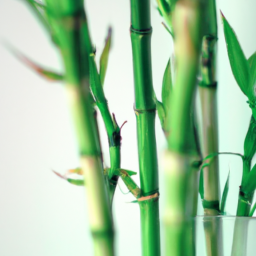
Types of Bamboo Plants Indoor
Welcome to our guide on the popular varieties of bamboo plants suitable for indoor environments. Bamboo plants are not only beautiful and elegant, but they also have air-purifying properties that make them perfect for indoor spaces. In this article, we will explore some of the best types of bamboo plants that you can grow indoors.
Popular Varieties of Bamboo Plants Suitable for Indoor Environments
1. Lucky Bamboo
Lucky Bamboo, also known as Dracaena sanderiana, is one of the most popular types of bamboo plants for indoor environments. Despite its name, Lucky Bamboo is not actually a bamboo plant but belongs to the Dracaena genus. It is known for its easy care requirements and its ability to thrive in low light conditions.
Lucky Bamboo is often grown in water, making it a great choice for indoor spaces where soil may not be ideal. It can be grown in a vase or container filled with water, with occasional changes to keep the water fresh. Lucky Bamboo is believed to bring good luck and prosperity, making it a popular choice for home and office décor.
When caring for Lucky Bamboo, make sure to keep it away from direct sunlight and change the water every 2-4 weeks. Trim any yellowing or dead leaves to keep the plant looking healthy and vibrant. Lucky Bamboo is a low-maintenance plant that adds a touch of greenery to any indoor space.
2. Bambusa Vulgaris
Bambusa Vulgaris, also known as Golden Bamboo, is a species of bamboo that can be grown indoors with the right care and conditions. This bamboo plant is known for its tall, upright growth and golden-yellow culms that add a touch of elegance to any indoor space. Bambusa Vulgaris is a fast-growing bamboo species that can reach heights of up to 50 feet in outdoor settings.
When grown indoors, Bambusa Vulgaris requires bright, indirect light and regular watering to thrive. Make sure to place it near a window where it can receive adequate sunlight, but avoid direct exposure to harsh sunlight. Keep the soil consistently moist but not waterlogged, and fertilize the plant every 2-3 months to promote healthy growth.
Prune any dead or yellowing leaves to maintain the plant’s appearance and encourage new growth. Bambusa Vulgaris is a stunning bamboo plant that can add a tropical feel to your indoor space, making it a popular choice for plant enthusiasts.
3. Phyllostachys Aurea
Phyllostachys Aurea, also known as Golden Bamboo or Fishpole Bamboo, is a versatile bamboo species that can be grown indoors with the right care and conditions. This bamboo plant is known for its tall, slender culms and bright green foliage that add a touch of vibrancy to any indoor space. Phyllostachys Aurea is a fast-growing bamboo species that can reach heights of up to 40 feet in outdoor settings.
When grown indoors, Phyllostachys Aurea requires bright, indirect light and regular watering to thrive. Make sure to place it near a window where it can receive adequate sunlight, but avoid direct exposure to harsh sunlight. Keep the soil consistently moist but not waterlogged, and fertilize the plant every 2-3 months to promote healthy growth.
Prune any dead or yellowing leaves to maintain the plant’s appearance and encourage new growth. Phyllostachys Aurea is a striking bamboo plant that can add a touch of elegance to your indoor space, making it a popular choice for plant enthusiasts.
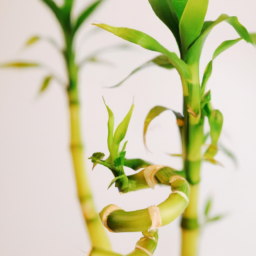
Tips for Caring for Different Types of Bamboo Plants Indoors
Choosing the Right Type of Bamboo Plant
When it comes to choosing the right type of bamboo plant for indoor use, there are a few key factors to consider. First and foremost, it’s important to determine the amount of space you have available for your bamboo plant. Some types of bamboo plants can grow quite large, so you’ll need to make sure you have enough room for the plant to thrive.
Another important factor to consider is the amount of light your indoor space receives. While bamboo plants generally prefer bright, indirect light, some varieties can tolerate lower light conditions better than others. Be sure to choose a bamboo plant that is well-suited to the lighting conditions in your home.
Lastly, consider the level of maintenance you are willing to commit to caring for your bamboo plant. Some types of bamboo plants require more frequent watering and pruning, while others are more low-maintenance. Choose a bamboo plant that fits your lifestyle and level of gardening experience.
Caring for Lucky Bamboo Plants
Lucky bamboo plants, also known as Dracaena sanderiana, are a popular choice for indoor bamboo plants due to their easy care requirements and attractive appearance. To care for lucky bamboo plants, place them in a container filled with water and pebbles, making sure the roots are submerged in water at all times.
Lucky bamboo plants prefer bright, indirect light, so be sure to place them near a window where they can receive plenty of sunlight. Change the water in the container every two to four weeks to prevent the growth of algae and bacteria.
In terms of temperature, lucky bamboo plants thrive in temperatures between 65-90°F (18-32°C). Avoid placing them near drafty windows or heating vents, as extreme temperature fluctuations can stress the plant.
Caring for Bambusa Ventricosa (Buddha Belly Bamboo)
Bambusa ventricosa, also known as Buddha Belly Bamboo, is a unique and eye-catching variety of bamboo plant that is well-suited for indoor use. To care for Buddha Belly Bamboo, plant it in a well-draining potting mix and water it regularly to keep the soil consistently moist.
Buddha Belly Bamboo plants prefer bright, indirect light, so be sure to place them near a window where they can receive ample sunlight. Rotate the plant occasionally to ensure even growth on all sides.
In terms of temperature, Buddha Belly Bamboo plants thrive in temperatures between 65-85°F (18-29°C). Avoid placing them near drafty windows or heating vents, as extreme temperature fluctuations can stress the plant.
In conclusion, caring for different types of bamboo plants indoors requires attention to detail and a good understanding of each plant’s specific needs. By choosing the right type of bamboo plant for your space and providing proper care and maintenance, you can enjoy the beauty and tranquility that indoor bamboo plants bring to your home.
In a Nutshell
If you’re looking to bring a touch of nature into your home, bamboo plants are a great option. There are several types of bamboo plants that thrive indoors, each with its own unique characteristics. One popular choice is the Lucky Bamboo, which is not actually a bamboo plant but a member of the Dracaena family. It is known for its easy care and ability to grow in low light conditions, making it a great choice for beginners.
Another type of bamboo plant that can thrive indoors is the Bambusa ventricosa, also known as Buddha’s Belly Bamboo. This plant gets its name from its unique swollen internodes that resemble a belly. It is a slow-growing variety that can reach up to six feet in height, making it a striking addition to any indoor space. Whether you prefer the sleek look of Lucky Bamboo or the quirky charm of Buddha’s Belly Bamboo, there is a type of bamboo plant that is sure to suit your indoor space and bring a touch of greenery into your home.
Here are some questions from our readers:
Q1. What are the different types of bamboo plants that can be grown indoors?
A1. There are several types of bamboo plants that can thrive indoors, including Lucky Bamboo, Dwarf Bamboo, and Hedge Bamboo. Each of these varieties has unique characteristics and requirements, so it’s important to choose the one that best suits your indoor space.
Q2. How do I care for indoor bamboo plants?
A2. Indoor bamboo plants require bright, indirect sunlight and regular watering to thrive. It’s important to keep the soil moist but not waterlogged, and to provide adequate humidity by misting the leaves regularly. Additionally, you can fertilize your bamboo plant every few months to promote healthy growth.
Q3. Can bamboo plants be grown in water indoors?
A3. Yes, Lucky Bamboo plants are often grown in water indoors. Simply place the bamboo stalks in a container filled with water, making sure to change the water every 2-4 weeks to prevent stagnation. This method of growing bamboo can add a unique touch to your indoor space.
Q4. Are bamboo plants safe for pets?
A4. While bamboo plants are generally non-toxic to pets, it’s still important to keep them out of reach of curious animals. Lucky Bamboo, in particular, can be harmful if ingested in large quantities. To ensure the safety of your pets, consider placing your bamboo plant in a location that is inaccessible to them.
Q5. How can I prevent my indoor bamboo plant from becoming too large?
A5. To prevent your indoor bamboo plant from becoming too large, you can trim the stalks with a sharp, clean pair of scissors. This will help maintain the plant’s size and shape, as well as promote new growth. Additionally, repotting your bamboo plant into a slightly smaller container can help limit its size.
Dr. Olivia Green is a botanist with over two decades of experience in indoor plant cultivation. She holds a Ph.D. in Plant Biology and has dedicated her career to researching plant behavior in controlled environments. Dr. Green is passionate about helping plant enthusiasts master the art of indoor gardening through her extensive knowledge and practical insights.

